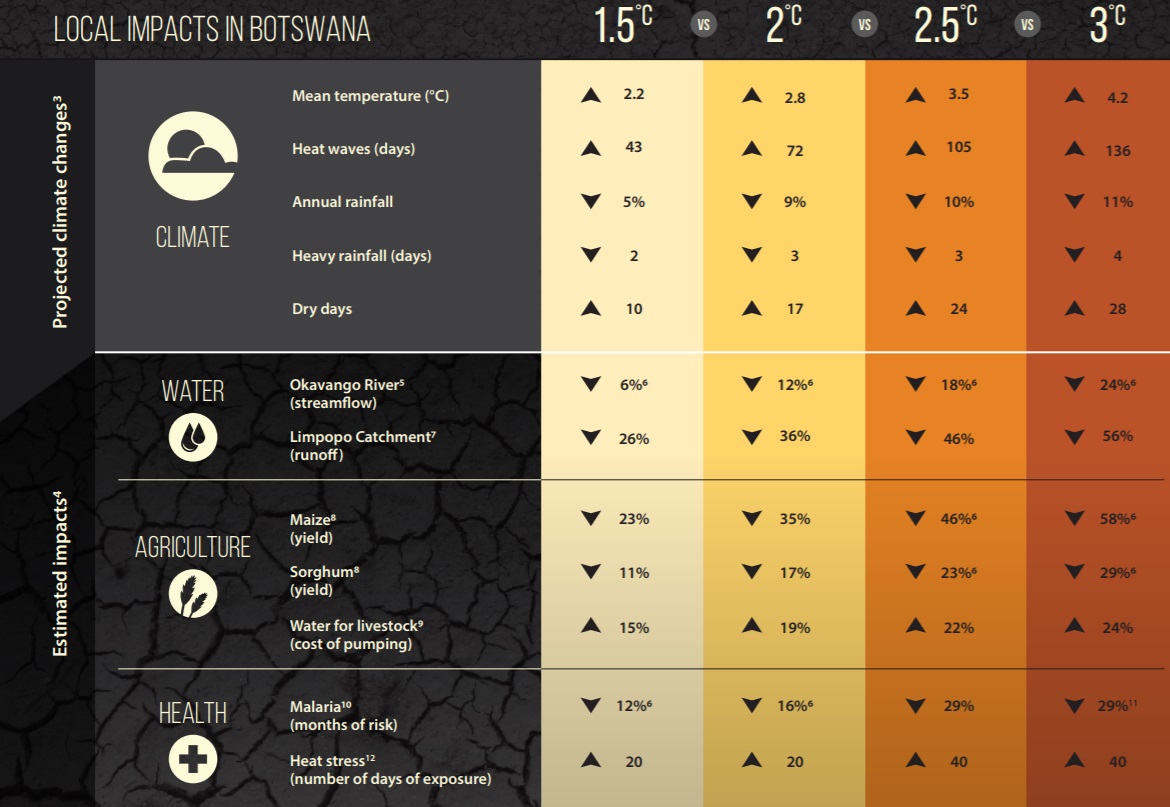What global warming of 1.5°C and higher means for Botswana

Introduction
The Paris Agreement has a goal of limiting global warming well below 2°C, ideally 1.5°C. Understanding the local-level impacts of these global temperature targets is crucial for informing climate change adaptation needs and actions. To date, mitigation pledges by nations fall far short of what is needed, with the world on track to warm by 3.2°C by the end of the century.
This infographic* produced by the Adaptation at Scale in Semi-Arid Regions (ASSAR) project sumarises the impacts of warming scenarios from 1.5-3°C in Botswana.
*Access the full infographic from the right-hand column.
Methods and Tools
The methodology behind this analysis can be found in the ASSAR working paper: Determining what global warming of 1.5°C and higher means for the semi-arid regions of Botswana, Namibia, Ghana, Mali, Kenya and Ethiopia: A description of ASSAR’s methods of analysis.
Impacts of 1.5°C and higher in Botswana
- For Botswana, local warming and dryingwill be greaterthan the global average.
- So, even a 1.5°C increase in global temperature will have severe local impacts, negatively affecting water supply, agriculture, health, and other vulnerable sectors.
- The 1.5°C threshold could be breached within the next decade, and the 2°C threshold the decade after.
- This means there is an urgent need to accelerate Botswana’s adaptation responses.
(0) Comments
There is no content